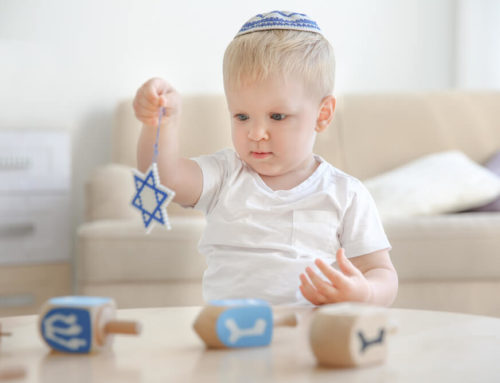If you have been studying the Jewish faith, then you probably know all the necessary information pertaining to the tradition and ceremony of the Jewish haircut. Still, if you are just rediscovering your Jewish roots or came into contact with this rich culture only a while ago, then you might have a few questions regarding terms like “upshernish,” “upsherin,” “peyot,” and “shearing.”
To help you better understand the long-standing tradition of the first Jewish haircut, Dr. Andrew Krinsky at South Florida Mohel and his team have created this comprehensive article to help you learn more about the hair-cutting ceremony.
Upshernish: What Is It?
The ceremony of the Spanish (also known as chalakah in Hebrew and shearing in Yiddish) is the ceremonial first haircut of a Jewish baby boy. This time-hallowed tradition involves not cutting the child’s hair for the first year of his life.
And then, on the boy’s third Jewish birthday, the festive upshernish or shearing takes place, which is the before-mentioned festive hair-cutting event. During the ceremony, the side locks or peyot are somewhat left untouched (not cut to the skin). With this, the Jewish boy fulfills the commandment that Jewish men should not “round the corners of their heads.”
Regarding the question of age, some communities (especially Sephardic groups) tend to delay the upshernish ceremony to ages four, sometimes five, six, and in some cases, even seven.
The Significance of Shearing

For some, the Jewish haircut ceremony may seem like a large birthday party, but it’s rather significant in the Jewish community. According to tradition, the little boy was only a baby for the first three years, not yet able to give, only to receive. At the age of three, he is now ready to take a more active role in his education, and the community (and the world) will soon be able to benefit from all the good deeds he will do (or mitzvot).
From this perspective, the Jewish haircut isn’t just about visual differences. The shorter hair also aims to convey this change. For three years, the little boy was just a long-haired toddler who may often have been mistaken for a girl. Now, he is clearly a short-haired little man, and the chapter of his boyhood is slowly ending.
Still, the peyot, or the mandated side locks, will be left intact. Apart from that, the boy will also learn to wear the tzitzit and kippah and be expected to perform good deeds.
In that sense, the upsherin or shearing isn’t just a Jewish haircut ceremony but a turning point that signifies a relevant transition not just for the boy and his family but for the entire community, as another valuable Jewish man will soon join it.
Upsherin Customs
The haircut is only part of the tradition. The event will also include the following customs:
- As mentioned, this will be the first time the boy wears the tzitzit and kippah , and he will continue to wear them from this day forward.
- The child will be encouraged to recite the following line: “Torah tzivah lanu Moshe morasha kehillat Yaakov.”
- The parents should give the boy money, which he is encouraged to put in a box for charity.
- The haircut ceremony should occur in a house of study, or holy setting, if possible, at least partially.
The Origins of the Upshernish
The Talmud of Shulchan Aruch (or the Code of Jewish Law) doesn’t mention the ceremony of the upshernish. Still, it has been held in communities for countless generations.
Religious experts don’t really know when the custom started, but the earliest records suggest that it was around by the 16th century when Rabbi David Ibn Zimra mentioned the custom.
Why Age Three?
When Jewish children turn three, their fathers are obligated to teach them to read from the Torah and follow its directions. As hinted before, the shearing is also an educational ceremony, and the third birthday signifies the start of his formal Jewish education.
Some experts regard the third birthday as an obligation, as it is hinted at in the Torah. For others, the third birthday points to Midrashic sources or the tradition of the orlah, where Jews aren’t supposed to eat the fruit of the trees they’ve planted for at least three years. During those initial three years, the fruit’s nourishing qualities aren’t apparent yet and are concealed within the fruit.
The Midrash points out that this same law can also be applicable to Jewish children because the Torah compares humans to trees.
About the Peyot
As mentioned above, the Torah orders Jewish males to leave the peyot unshorn. As experts explain, this was because pagan priests would completely shave their heads to look more like the idols they worshipped, which were hairless.
To oppose this practice, the Torah explicitly decrees Jewish males to keep the peyot to signal their rejection of these paganistic ways and their commitment only to God.
And all in all, this also is a meaningful gesture in the Jewish haircut ceremony. The peyot helps to remind the boy always to hold a strong commitment to the Jewish way of life and to remain unshaken by outside forces.
Planning the Event

When planning an upsherin, parents should know that there are several days in the calendar when the action of cutting one’s hair is discouraged and even forbidden. Please check whether the third birthday occurs on one of these days. If it does, the upsherin ceremony should be postponed, but it should be performed as soon as possible. To ensure everything goes smoothly, speaking to your rabbi before scheduling a haircut ceremony is always a good idea.
In a modern-day context, especially among progressive Jewish families, the celebration can either signify the coming-of-age of the daughter and the son, and it can include a haircut but doesn’t necessarily have to.
Also, depending on your preferences, you can plan the ceremony at a synagogue, at your home, or even at a park. While custom and tradition prefer the synagogue, consult with your family and rabbi first to choose a place everybody’s happy with.
The First Group Steps of a Child
All in all, the Jewish haircut ceremony is much more than a simple birthday with a pair of scissors getting center stage. It’s a significant moment when the young boy gets to play a more profound role in the faith he follows. The upsherin signifies a mental and physical connection to God and the community and aims to prepare the young boy to become a valuable and moralistic Jewish man who is helpful to his community and the entire world.
Want to learn more about this tradition or other religious customs? If yes, feel free to reach out to Dr. Krinsky today.







